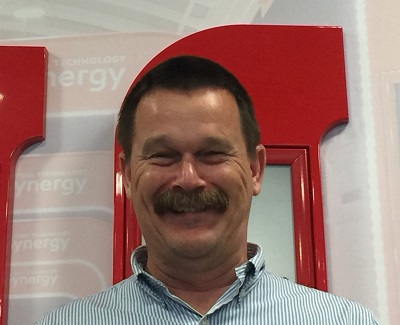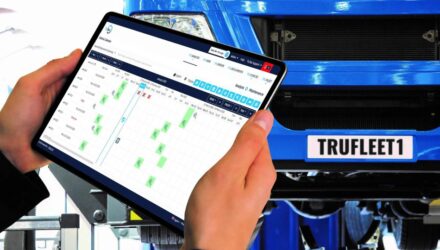Advances in diesel engine design and their impact on heavy goods vehicles
Heavy-duty diesel vehicles have come under the spotlight in recent years because of their perceived environmental impact. Fortunately, technological developments, along with modifications in engine design and operation, can help to lower fuel consumption and reduce emissions. So, what are some of the key technologies, how can high-quality fuel help engine performance, and what technology improvements are possible in the future?
It starts with fuel injection
Optimising fuel injection is a key step to improving fuel economy and reducing emissions. Most modern commercial truck engines use a high-pressure, common-rail system, which sprays diesel into the combustion chamber near the end of the compression stroke to trigger the combustion stroke. Today’s injection systems are capable of multiple high-pressure injections to deliver precise quantities of fuel into the chamber at the right timing. The extremely high injection pressure provides good fuel atomisation and promotes air entrainment in the spray. This helps ensure more complete fuel combustion, which can result in enhanced efficiency and fewer engine-out emissions.
The benefit of quality fuel formulation
In addition to injection system design, fuel quality is important for optimal combustion. Under normal operation, deposits can form inside the injector and the nozzle. These can impair injection timing and spray quality, including fuel atomisation and fuel-air mixing. This deterioration in spray quality can lead to locally high temperatures that promote the formation of nitrous oxide (NOx) and fuel-rich zones that form particulate matter (PM). It can also increase fuel consumption and result in the premature replacement of injectors. Increases in fuel consumption and vehicle downtime are significant factors in fleet operating costs. Fortunately, the use of fuel with pre-blended additives, such as Esso Diesel Efficient™, can help alleviate these issues.
Aftertreatment reduces pollutants
Downstream of the engine, modern trucks have advanced aftertreatment systems to reduce tailpipe emissions. The latest Euro VI standard sets maximum limits for specific emissions; it significantly reduces permissible levels for PM and NOx compared with previous standards. There are a number of approaches that are helping vehicle builders meet these targets, including diesel particulate filters (DPF), which can trap PM and regenerate the filter when the exhaust gases reach a high enough temperature. To control NOx emissions, selective catalytic reduction (SCR) is used, which injects diesel exhaust fluid (DEF) – for example AdBlue® – into the exhaust stream. The SCR converts NOx into water and nitrogen, which are then expelled through the tailpipe.
Aftertreatment systems can also be affected by fuel quality because they are influenced by what is happening in the engine. As the injection system deteriorates due to deposit build-up, engine emissions increase. Higher NOx can require more DEF. Higher PM can result in more frequent DPF regeneration, which can shorten filter life due to increased thermal stress and create maintenance challenges. A high-quality diesel fuel with cleaning additives can help mitigate these problems by reducing deposit build-up in the injectors.
Future opportunities in waste heat recovery
Looking to the future, new technologies are being developed to further reduce fuel consumption. Fuel energy is not fully converted into engine power through combustion; a significant amount of energy is expelled as heat in the exhaust gas and engine coolant. Waste heat recovery (WHR) systems capture a portion of this energy and convert it into useable power. Research and development efforts have focused on three technologies: turbo compounding, Rankine cycle systems and thermoelectric converters.
Turbo-compounding, which gears a second turbine to the crankshaft, is increasingly being used in heavy-duty applications. Mechanical turbo-compounding isn’t new; it has been used commercially in diesel engines for decades. However, electrical turbo-compounding, which offers an additional improvement in efficiency, is still in development.
In systems based on the Rankine cycle, heat from the exhaust gas is used to heat a fluid, which consequently evaporates and expands, producing power. Both turbo-compounding and Rankine systems can mechanically couple the power derived from waste heat directly to the crankshaft. Alternatively, the power can be converted to electricity for auxiliary systems or hybrid diesel-electric powertrains.
Another way to generate electrical power from waste heat is with thermoelectric generators. These devices generate electricity directly from a temperature difference between the hot exhaust gas and a cooler sink (for example, engine coolant). These three technologies are in varying stages of maturity but one or more could play a role in helping to meet future CO2 standards. In the future, manufacturers may choose different WHR strategies to manage the trade-off between fuel consumption benefits and the cost and complexity of these technologies.
A holistic approach
Tackling the challenges of engine efficiency and emissions requires a holistic approach. No one method or technology will deliver the optimum solution; the optimisation of engine technology, vehicle design and fleet operation can all play a part. High-quality fuel will also continue to have a central role in helping a fleet to perform at its best.
Author: Dirk Pyatt, EAME Commercial Fuels Marketing Manager



















